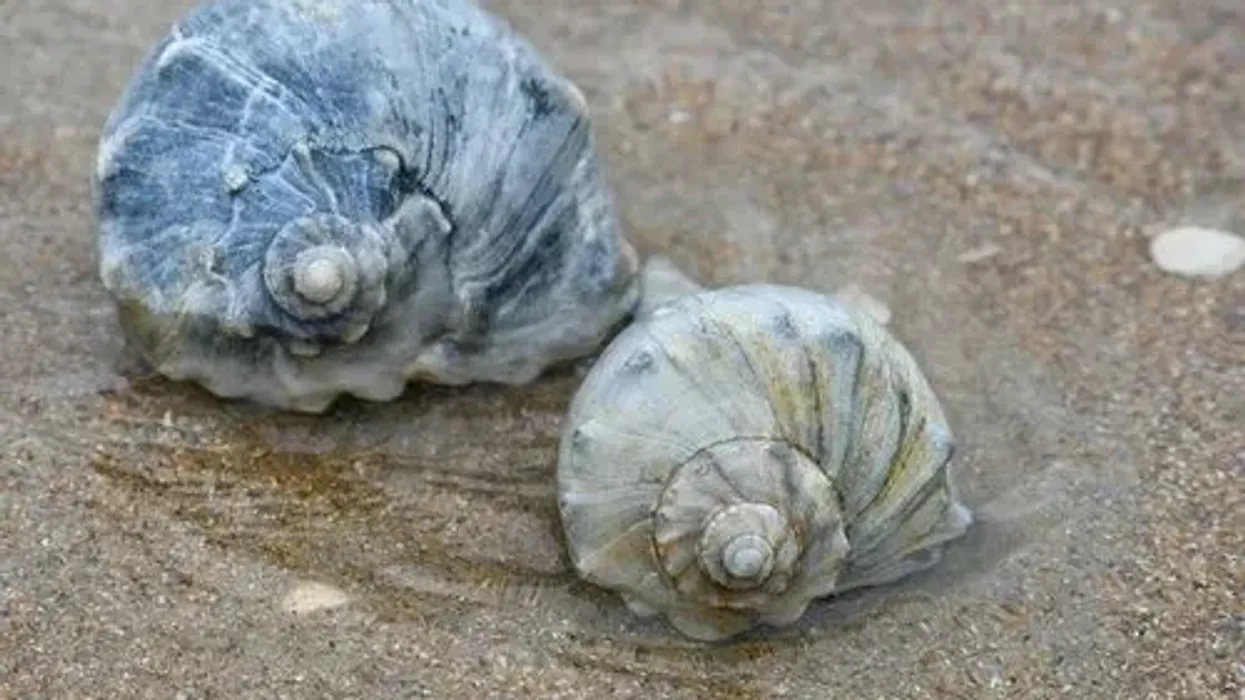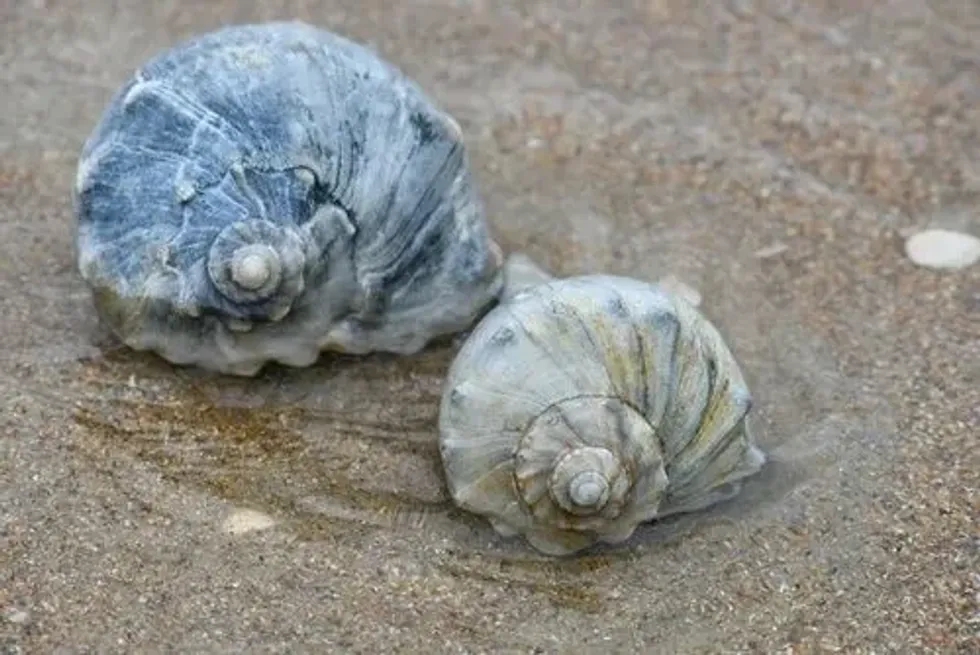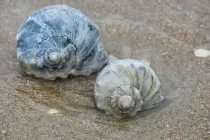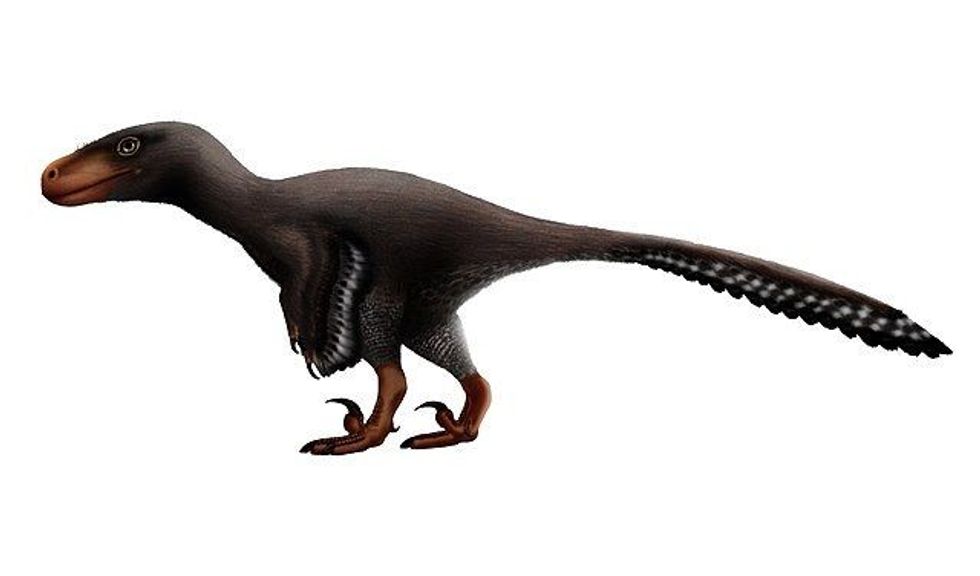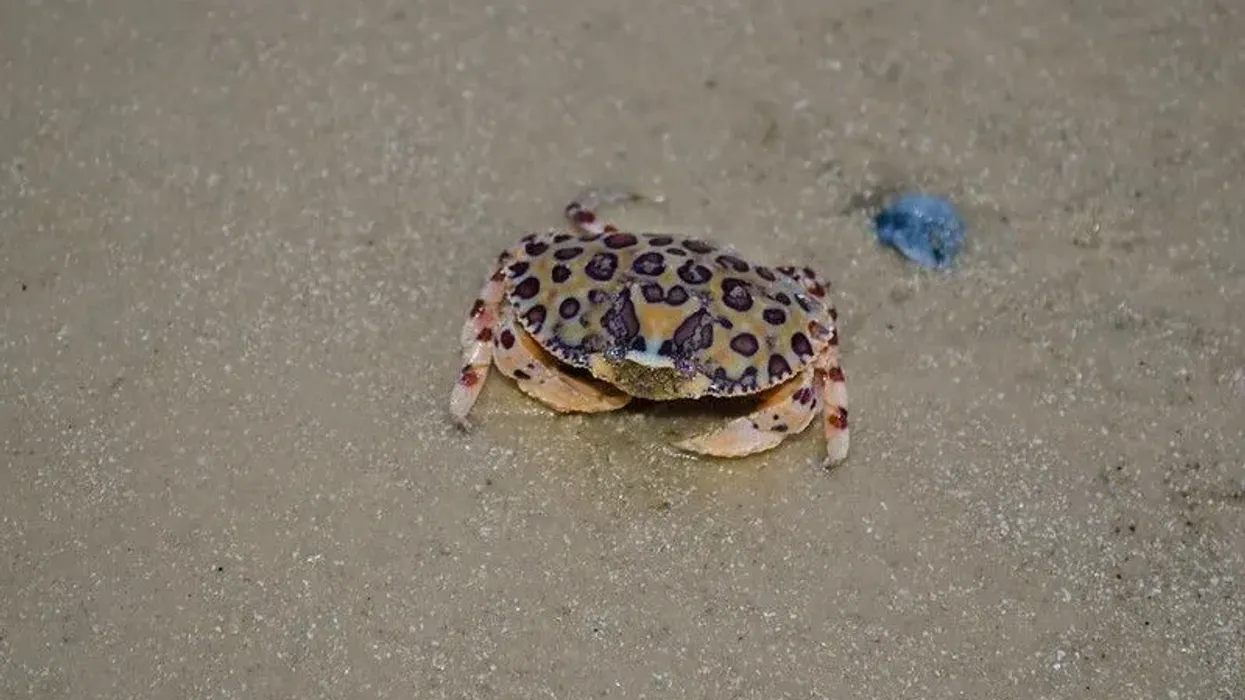Knobbed whelks, discovered first in 1791 by Gmelin, are marine gastropods. They are a species of large and predatory sea snails. It is the second-largest species of Busycon whelks. The habitat of knobbed whelk (Busycon carica) can be found on the shore as well as offshore.
They live in shallow waters or deep inside the sea. Knobbed whelks are mainly found along the east coast of the United States. They prey on clams, oysters, and other bivalves.
Knobbed whelks have both commercial and economic importance. The shell of knobbed whelks has an aesthetic and intricate marine decor appeal. It has textured knobs and spirals. They are used widely for making ornaments and items of decor. A knobbed whelk is the state shell of New Jersey and Georgia.
You will find in this article facts about the knobbed whelk, knobbed whelk scientific name, knobbed whelk shell, feeding information, and more!
You may also check out the fact files on giant clam and horse conch from Kidadl.
Knobbed Whelk Interesting Facts
What type of animal is a knobbed whelk?
A knobbed whelk (Busycon carica) is a large sea snail species which is predatory in nature. These marine gastropod molluscs are found in tidal estuaries along the east coast of the United States from Massachusetts to northern Florida.
Marine creatures use the sharp edge of their whelk shells to prey on oysters and other bivalves. Knobbed whelks are not merely the shells you find strewn across the beaches, but they are the second largest species of predatory snails with a prey drive.
What class of animal does a knobbed whelk belong to?
Knobbed whelks are a kind of large sea snail which belong to the class of Gastropoda. The class of Gastropoda commonly includes snails and slugs. The class is a part of the large taxonomic class of invertebrates under the phylum of Mollusca. After Arthropoda, Mollusca is the second largest phylum of invertebrate creatures.
How many knobbed whelks are there in the world?
It is difficult to estimate the number of knobbed whelks left in the world since the species is not endangered or nearing extinction. Their conservation status is Not Evaluated by the IUCN Red List.
Where does a knobbed whelk live?
A knobbed whelk lives in marshy, muddy, and sandy areas. They also reside in shallow waters as well as deep waters depending on the time of the year.
What is a knobbed whelk's habitat?
A knobbed whelk's habitat is found in tidal estuarine waters, offshore at a depth of 150 ft (45 m) around the continental shelf.
Who do knobbed whelks live with?
Knobbed whelks are migratory beings and usually school alone.
How long does a knobbed whelk live?
The average life expectancy of a knobbed whelk is 10-15 years.
How do they reproduce?
Female knobbed whelks lay a thread or string of eggs in deep water twice a year, from September to October and April to May. The end of the strings of eggs is anchored securely into the sand.
The string consists of about 40 capsules. Each capsule contains about 100 fertilized eggs. The eggs grow slowly and hatch in about 13 months.
Knobbed whelks are protandric hermaphrodites. It means that adult knobbed whelks start out as adults and turn into females as they age and mature. This could be one of the reasons why females are relatively larger than males.
What is their conservation status?
The conservation status of knobbed whelks is Not Evaluated by the IUCN Red List of Threatened Species. This species is not endangered or nearing extinct in any way.
Knobbed Whelk Fun Facts
What do knobbed whelks look like?
Knobbed whelks are large and predatory sea snails that can grow up to 10 in (25.4 cm) in size. The hard shell could be ivory, gray-white, or tan in color.
The inner part of the shell is usually orange, yellow, or red. The colors of whelk shells vary according to the geographical location of the snail.
The spiral or whorled shell of the knobbed whelk has spines or low knobs over its shoulder. The shell opens up on the right side. When the snail retracts back into the shell, the operculum which is a hard plate-like object acts as a trap door.
The darkly hued and soft body of the snail is segmented into the head and abdomen. Whelks have eyes on either side of their siphon end just below their feelers.
These look like tiny black dots. Whelk shells are not alive but they provide the home for whelks.

How cute are they?
Knobbed whelks are marine gastropods. The body of the snail is dark, slimy, and moist. They do not possess any appealing features. However, their shells are aesthetic and pretty. Therefore, their shells are used to make ornaments and decorative pieces.
How do they communicate?
Knobbed whelks have sensory organs like a pair of tentacles on their head. One senses light while the other is for touch and smell.
How big is a knobbed whelk?
Knobbed whelks are the second largest species of snails. They are slightly bigger than lightning whelks. A lightning whelk is around 8 in (20.3 cm) while a knobbed whelk can grow up to measure 12 in (30.4 cm) in size.
How fast can a knobbed whelk move?
Knobbed whelks can move up to 3.9 in (10 cm) in a minute. They cannot move at a decent speed due to the lugging around a big shell on their backs.
How much does a knobbed whelk weigh?
The weight of a knobbed whelk is around 1-2 lb (0.4-0.9 kg).
What are the male and female names of the species?
There are no different terms to refer to the males and females of this species.
What would you call a baby knobbed whelk?
There are no specified terms for baby knobbed whelks.
What do they eat?
Knobbed whelks are carnivores that prey on clams, oysters, and other bivalves.
Are they poisonous?
Knobbed whelks are not poisonous since they are edible items used in culinary fields in many parts of the world.
Would they make a good pet?
Knobbed whelks are not suitable as pets. They cannot be domesticated or trained. However, they are bred by humans for the purpose of food and other commercial uses.
Did you know...
The spiral shell of knobbed whelks can change color from white to tan.
Knobbed whelks help in keeping the populations of oysters and other bivalves in check.
Knobbed whelks are the official state shell of the state of New Jersey and Georgia.
How do knobbed whelks protect themselves?
Knobbed whelks have a large shell attached to their bodies. They move around with this shell on their backs. At the sight of any predators or dangers, the snails tend to retract back into the shell, similar to an armadillo.
These shells open on the right side. They have trap doors called operculums on the right side that look like flat plates. They use their operculum to protect themselves after sliding back into the shell.
What is the relationship between knobbed whelks and humans?
Knobbed whelks are an economic and commercial source for humans. The inner mass of the shell is edible and is eaten in many parts of the world. The knobbed whelk shell holds touristic importance and is sold as ornaments and decorative items.
Here at Kidadl, we have carefully created lots of interesting family-friendly animal facts for everyone to discover! For more relatable content, check out these blue sea slug facts and apple snail facts for kids.
You can even occupy yourself at home by coloring in one of our Knobbed Whelk coloring pages.

